10. OPEN SOURCE HARDWARE - FROM FIBERS TO FABRIC¶
This week's focus is on exploring the open source hardware field in general and focusing on its potential in the area of textile. Thus, we must hack an existing machine, make a machine or manufacturing tool and document its manufacturing process. I decided to make a tissue shredder due to my research background.
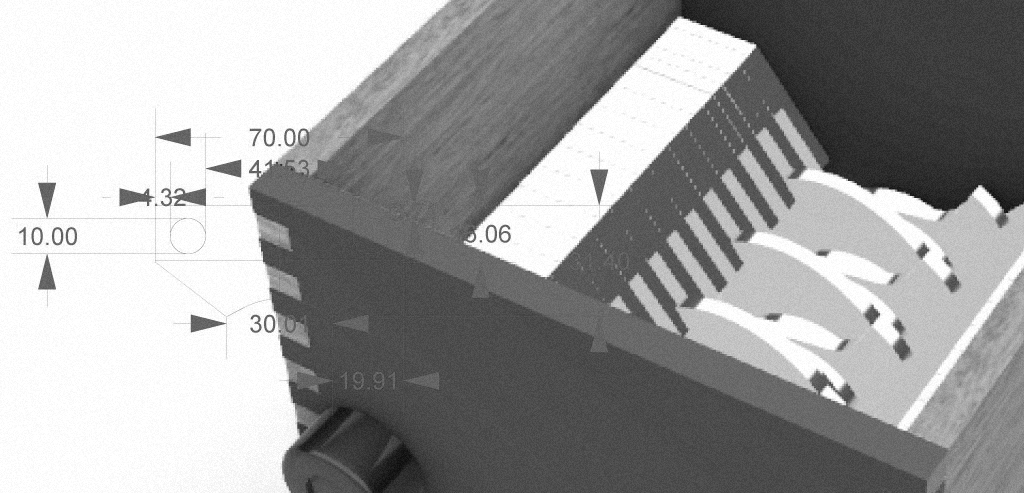
During graduation, while participating in the DeSIn Research Group, I had contact with the problem of textile waste in Brazil. In the researches I could see that many of the great national textile residues generators - even if they guarantee technological advances in machinery and textiles and innovation - do not care about the correct disposal of their residues due to the vast invoicing. Meanwhile, small generators lack information about the problem and treatment needs.
When the problem is brought to the local level, the textiles cannot be collected by recycling cooperatives, as everything that arrives is mixed with other recycling residues and entails a double expense for the city hall (since it pays twice for transport: from the place collected to the cooperative, and from the cooperative to the landfill) without financial return. Thus, textiles end up in landfills and become a problem for the disposal of leachate.
At the national level, the call notice No. 00/2012 of SEMA (Secretary of the State for the Environment) - which calls on business sectors to present proposals for REVERSE LOGISTICS according to Law 12,305/10 and Decree 7404/10 - does not oblige structuring and implementation of reverse logistics systems for textiles. This is because it does not consider them as “products that after consumption result in residues considered to have a significant environmental impact”, resulting in no obligation to collect them.

image from Ingrid Gonçalves for DeSIn
According to a report prepared by Aligleri et al (2018), each resident of the city of Londrina (my hometown) allocates 21.47 kg for selective collection monthly, but only 16.37 kg is actually recycled, the other 5.11 are considered tailings and sent to the city's landfill. Within this scope, textile material is the second main component of waste from recycling, second only to plastic. And according to a survey carried out by the DeSIn research group in 2019, most of those arriving at the cooperatives come from post-consumption, that is, clothing or decorative fabrics that have already gone through the use phase.

image from Ingrid Gonçalves for DeSIn
SHREDDER¶
I thought about building a machine for domestic tissue fragmentation for the reasons above, but also for personal needs: I really want to continue testing composites and other applications with shredded textile residue, but I don't have access to them so easily since the research project is in Londrina and I moved to Curitiba, another city in the state of Paraná, five hours from the first one. In addition, sometimes it ends up being difficult to dispose of my own textile waste, because today we really don't have a solution for this in the country. So, building a machine to shred textile waste is a desire I've had since I moved to another city.
reference projects¶
When looking for fabric shredders on the Internet, I found this lecture (in Portuguese), in which he shows the entire textile recycling process and what was the domestic solution found for the recycling of synthetic textile waste.
Here, he focuses a lot on the recycling process to make new yarns, and the solution he found was basically to use a hand carder. But as it has a value of R$3,000.00, he used only one roll and manually shredded it. This project ended up evolving into Redesfibra, but I didn't get much information about it.
I was wondering if this could not be done with manual card brushes or even with manual skimmers for pets. Iane also sent me some instructables carder open project options.

I was able to contact the person responsible for the project with the help of Iane and probably
we will have a meeting this week to talk a little about the open source shredder
When looking for shredders of other materials. I was very inspired by the work done by Precious Plastic:
That's because it reminded me a lot of the industrial-grade shredder that we used in partnership with the company Estopas Coelho, a manufacturer of rags that is a partner of the DeSIn Group. This company also sells the shredder because they build it, and at the time, they charged R$10,000.00 (amount with a discount budgeted in 2019) due to the partnership with the project.
 images from Ingrid Gonçalves for DeSIn
images from Ingrid Gonçalves for DeSIn
When studying the shredder more deeply, I saw that the base structure for everything else to work is the box with the blades that cut the material.

However, I found the project a little expensive. So I went looking for other similar projects on instructables. And I found this one, from zdmvk with two axes.

And this one, with a very documented and explained project, where vaskes82 even made available the manufacturing files and some parts were printed in 3D.

studies¶
As I have never built a machine or anything like that before, I deepened my studies to understand what would be best to build at the moment. Here are some scans of my studies (unfortunately all my notes are very messed up, with low quality and in Portuguese!).




The main idea was to make first (at the top) a shredder, and at the bottom a card-style shredder, to take very fine samples that could be used for spinning. In the end, the residue would fall through a tube into a drawer for easy removal. However, I decided to make only the shredder part of the project in a 10 x 10 cm scheme, with just one swivel axis.
Plastic shredders appear to have a very large blade thickness, but I believe that a thinner blade is better for the fabric, so I chose to work with a 3mm aluminum.
project¶
I started by designing all the pieces in Rhino, basing myself on previously researched projects. The project includes 3D printed parts (black), laser cut parts (wood) and metal cut on the Router (internal part). Only the design threads were made on Fusion 360. I decided to make a small size version for initial testing...


Rendered:





Measures:
steel parts:
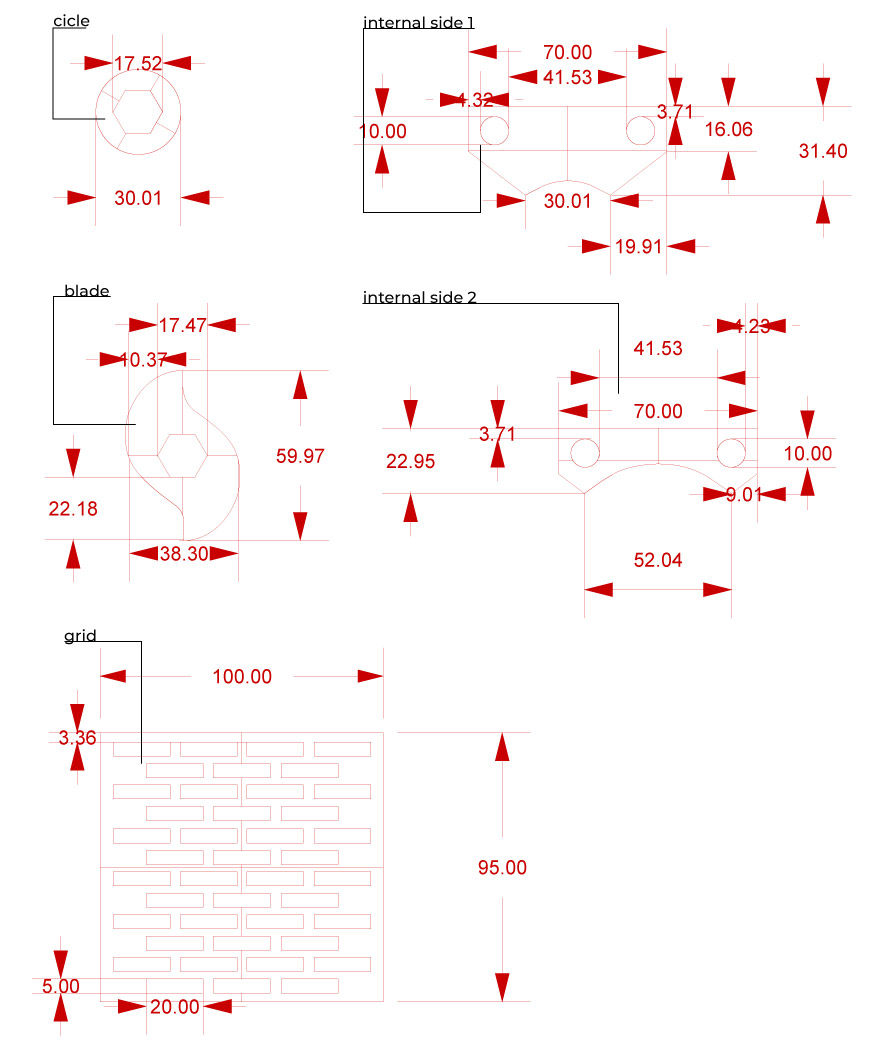 The metal parts are 3mm steel.
abs parts:
The metal parts are 3mm steel.
abs parts:
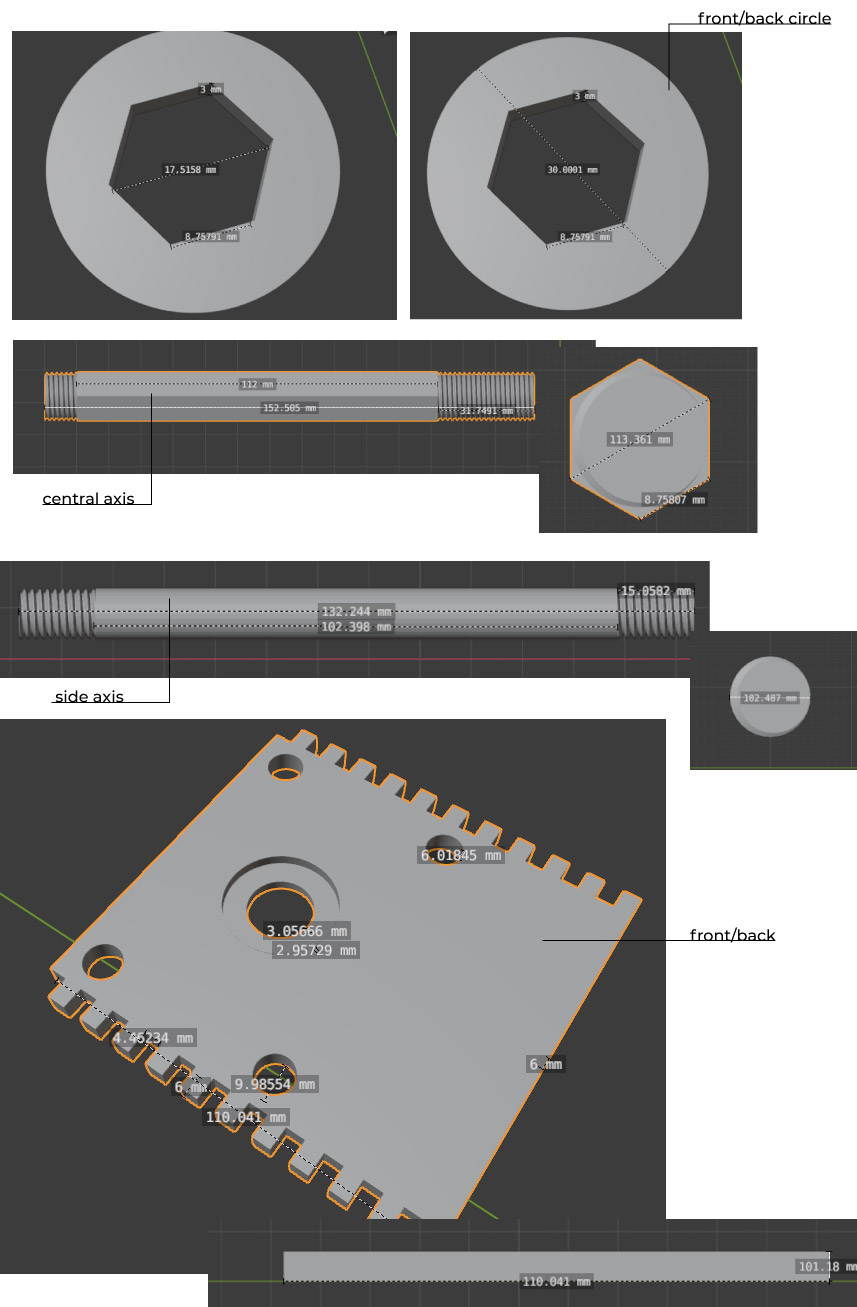
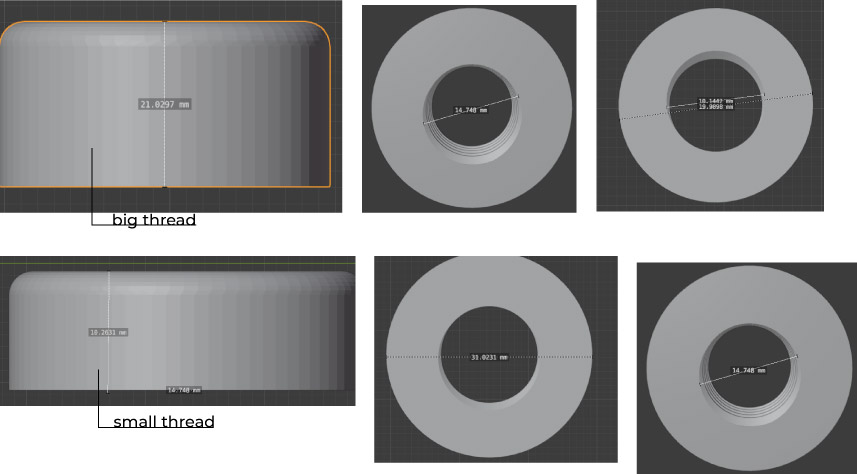
Download here.
production and assembly¶
I decided to first cut the mdf to test the size and then cut the metal if it worked.

However, I gave up on the idea halfway through and decided to mount straight to the metal. Big mistake!
It was necessary to sand all the faces of the metal before assembling, and for that I dared to use the laboratory sander. The internal and organic parts (such as the holes) were hand sanded.

Laser cut steel parts:

3D printed parts:
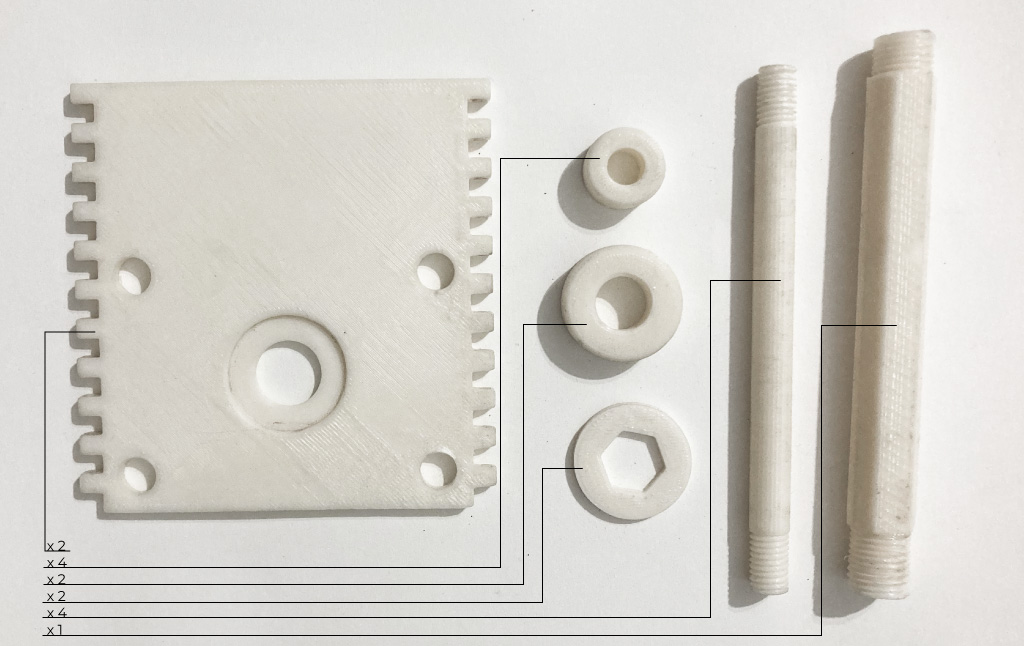
Bad ideia print it in white ABS!
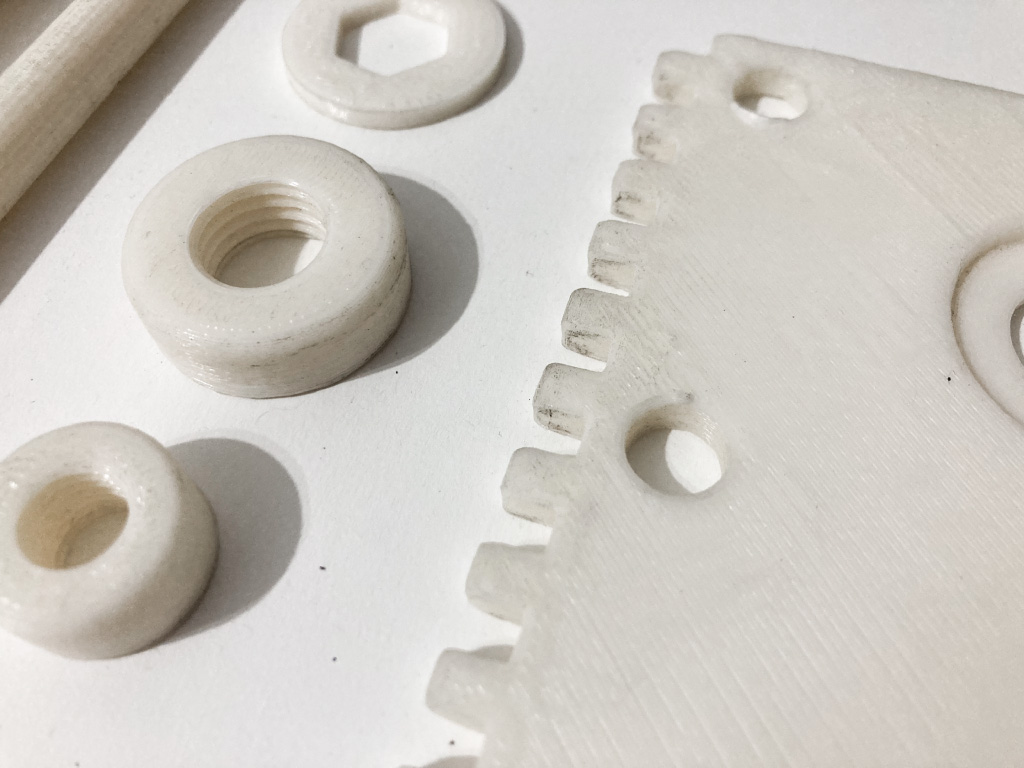
MDF (6mm) laser cut parts:

List of parts
| Parts | Quantity | Technique |
|---|---|---|
| front/back | 2 | ABS 3D printing |
| small thread | 8 | ABS 3Dprinting |
| big thread | 2 | ABS 3D printing |
| front/back circle | 2 | ABS 3D printing |
| side axes | 4 | ABS 3D printing |
| Central axis | 1 | ABS 3D printing |
| internal side 1 | 34 | steel - laser cut |
| circle | 17 | steel - laser cut |
| internal side 2 | 32 | steel - laser cut |
| blade | 16 | steel - laser cut |
| grid | 1 | steel - laser cut |
| side | 2 | MDF laser cut |
For the assembly, I folowed the steps of the image below:

It was a big mistake to disregard the tests of the internal part made in mdf, because when assembling the machine with the final pieces cut in steel, it didn't work. That's because the space for the blade to rotate is narrow, it has 3mm and the space is also 3mm, so it locks.
Shredder - failed from Brunna Ramos on Vimeo.
This was quite frustrating as cutting the metal was quite expensive (R$465,11).

I also tried to mount it in another way to leave a bigger space for the blade to pass through, but that didn't work either. Here I tried to do the same sequence as before, but the inner side 2 was placed twice, and the circle too, leaving a space of 6mm for the blade to rotate. It didn't work because the blade needs to be centered in the space, and in this assembly it kept hitting the inner side 1.

motion¶
Motor:
I also dismantled an old vacuum cleaner engine that we were going to dispose of here at home.

But, talking in the lab about having no idea how to make the motor work in this project and about the desire to make the mechanical part run with a drill (for a very diy solution), the staff commented on this device that can adapt any end in the drilling machine. It was also the device that zdmvk used in his project...
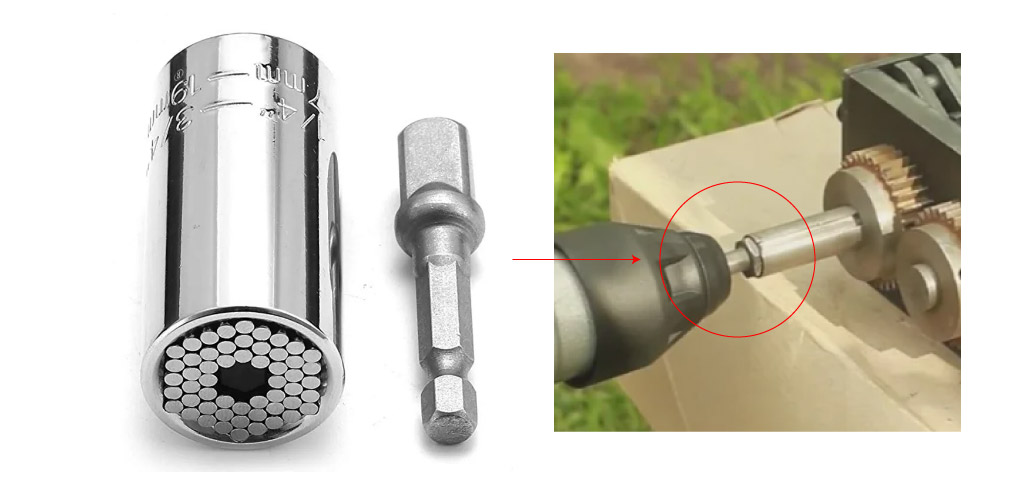
CONSIDERATIONS¶
I intend to continue this project in the future, not only for personal needs but also for the money spent! However, I know that I will have to cut several pieces of metal again for the measurements to match, I also know that this will be expensive (I will definitely test the inside with mdf this time). Cutting the metal parts to new measurements implies the length of the piece, so you may have to cut the mdf side again as well. As soon as the new version is ready, I will try to automate it with the drill, but I know that this project will probably be left for completion after fabrication, due to time.